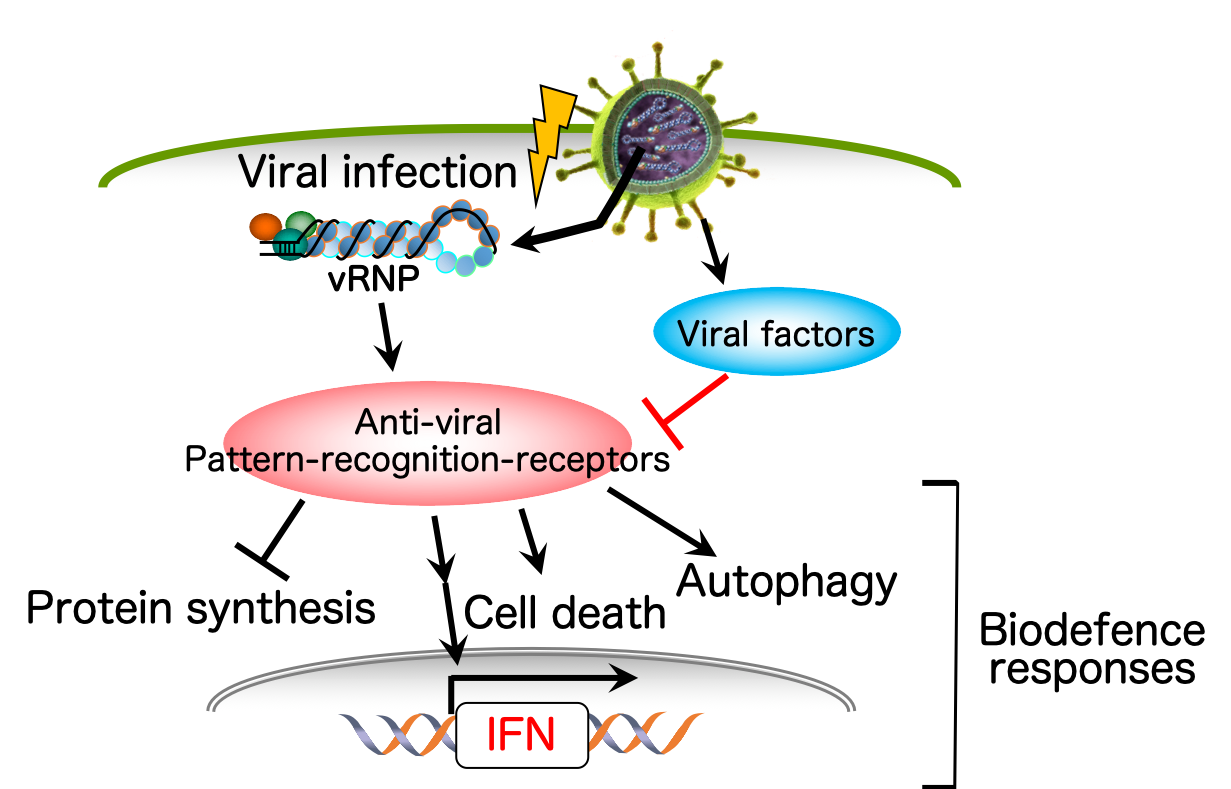Viruses proliferate in cells by utilizing many cell-derived factors from the host (host factors). In response, hosts activate urgent physiological functions including the immune system as part of its defense to maintain biological processes. Therefore, it can be said that the virus pathogenicity and species specificity are defined by the competition between virus utilizing the cell-derived factors and the host immune system.
Here, we focus on studying influenza virus and corona virus to elucidate the mechanism of its pathogenesis / host specificity through identification or functional analysis of virus-related host factor.


Respiratory-epithelium-specific inflammatory response.
Respiratory epithelial cells produce inflammatory cytokines upon influenza virus infection to eliminate infectious agents by inducing migration of phagocytic cells. However, excess inflammation induces exacerbate condition such as pneumonia.To understand the pathology of viral infections, we elucidate the mechanism of host recognition of infectious agent and inflammatory response in respiratory epithelial cells.

Viral genome replication and host-specificity
Influenza virus genome replication and transcription are species-specific, and it has been reported that avian influenza virus adapted to humans (emergence of new influenza) by overcoming the species-specific barrier. We are investigating the molecular mechanism behind viral genome replication and transcription. Additionally, we are also clarifying the mechanism of species-specificity by identifying and analyzing host factors crucial for this phenomenon.

Viral genome transport and viral particle formation
The influenza viral ribonucleoprotein complex (vRNP) is replicated in the nucleus, exported to the cytoplasm and finally, transported to the cell membrane for subsequent viral particle formation. To this end, we aim to clarify the spatio-temporal dynamics of viral particle formation through the identification and functional analysis of host factors that control the intracellular trafficking of vRNP.

Host defense evasion by viruses
When cells recognize infectious agent-specific molecules and structures, cells induce various biological defense responses in order to fight the intruder. However, viruses also evolve to acquire viral factors that suppress host’s defense system. We are elucidating the molecular mechanism of viruses’ host defense evasion through cell biological analysis.